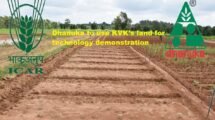India’s uneven distribution of rainfall may endanger foodgrain production & inflation direr.
The monsoon season in India is on course to be 11% wetter than average. However, the rainfall is not evenly distributed over the country, which might endanger this year’s food grains production and make the outlook for inflation even direr, according to analysts speaking on Tuesday.
The month of July is very important for Kharif. The beginning of the southwest monsoon in June marks the beginning of the sowing season for Kharif crops. According to forecasts made by the India Meteorological Department (IMD), the southwest monsoon will be typical this year.
According to the data, the rains have been spatially uneven, with a concentration evident in the central and southern parts of India, lagging in the northwest, and being a significant 15% below normal in the eastern and northern parts of the country.
Also Read | Fast-advancing monsoon will restore paddy coverage – Agri minister.
‘It is still possible for Kharif sowing to speed up during the following month if monsoon rains continue to improve in August and become more regionally even. Consequently, it is still far too soon to sound the alarm. However, if this uneven distribution of rainfall continues, there is a possibility that foodgrain production, particularly rice production, could decrease. This would be a risk to the growth of agricultural gross value added and a risk to the increase of food prices’ analysts from the research firm Nomura stated their opinion.
On a yearly basis, the amount of land used for rice cultivation, which takes place primarily in regions with little rainfall, has decreased by about 17%. The planting of pulses as a whole is greater, but the planting of tur is down roughly 20% YoY, while the planting of moong is significantly higher.
Additionally, there has been an increase in the planting of oil seeds, coarse grains, and cotton. As of this moment, the annual percentage change in the area planted to food grains is estimated to be -4.6% ‘d-July,’ Nomura stated.
According to the India Meteorological Department (IMD), there was a rainfall shortfall of 68% in the state of Uttar Pradesh, 51% in the state of Jharkhand, 49% in the state of Bihar, 40% in the state of Manipur, 30% in the state of Tripura, 27% in the state of West Bengal, 22% in the city of Delhi, 21% in the state of Mizoram, 18% in the state of Nagaland, and 16% in the state of Uttarakhand up until July.















Add Comment